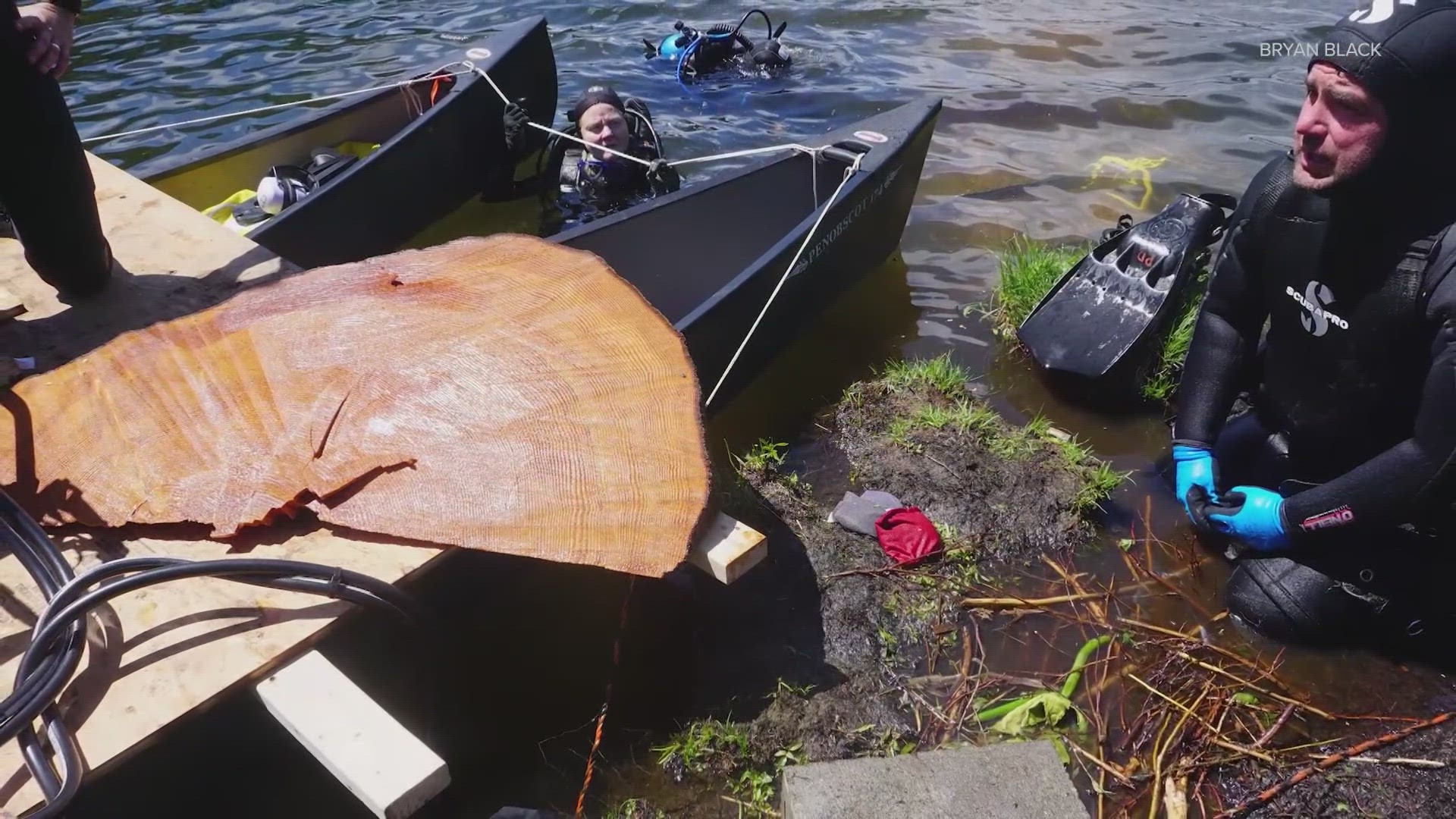SEATTLE — New research led by the University of Arizona and published in the journal Science Advances shows a seismic event around 1,100 years ago likely involved faults rupturing together or back-to-back earthquakes in western Washington.
Scientists examined tree rings from six sites, finding they had similar growth patterns and died in the same time span.
Harold Tobin, University of Washington's director of the Pacific Northwest Seismic Network, said it's exciting and notable research.
"We knew about the Seattle Fault, the Tacoma Fault, Saddle Mountain, Southern Whidbey Island; the whole range of these fault lines in our area that have the potential for earthquakes," Tobin said. "What we have not seen is any evidence of them interacting with each other in this way, linking up to create one larger - up to magnitude 7.8 - earthquake or a series of smaller but still big, damaging earthquakes."
Dr. Bryan Black is an associate professor of dendrochronology at the University of Arizona's Laboratory for Tree-Ring Research. He said studying tree rings can yield a lot of notable information about environmental history.
"What we look for as dendrochronologists is common patterns among trees," Dr. Black said. "So, as climate varies from year to year, you have very favorable climate year, the trees form a wide ring; during a drought, they form a narrow ring. As climate varies from year to year it sets off this synchronous growth pattern or bar code among trees, that's time specific."
Black and teams on the study harvested stumps from trees that died when the Saddle Mountain Fault impounded a stream that flooded a forest in the Olympics and studied sections of trees that drowned in landslides during a large earthquake on the Seattle Fault.
"What we were looking for was whether these trees share the same time-specific growth patterns, and we found they did," Black said. "They lived and died together across six sites in the Puget Sound region."
Black said it shows it's possible for these faults to link up or to produce a rapid succession of earthquakes.
"It provides us benchmarks of what could happen in the future, that these faults can be linked, that we've seen it in the past, albeit very infrequently," Black said. "This is probably the largest event that's happened in the last 16,000 years across these faults. But it's within the realm of possibilities and it's not included in modern hazard plans."
Seismologist Tobin echoed the sentiment, saying it shows cause to include the possibility of successive earthquakes or faults rupturing at once in hazard planning.
"There's no doubt that people have to consider now in the planning scenarios the greater likelihood of a larger earthquake - up to 7.8 - that's actually quite a bit different, three times bigger than a 7.5 ... so that's real and we have to think about that in our planning, and understanding the implication of back to back earthquakes and how one could cause damage and the second could kick some of those damaged structures over the edge," Tobin said. But he also noted that seismic events of this nature remain rare, and it's best to "prepare, not despair."
Black noted another interesting finding from the work.
"We also had this presumably massive solar storm in the year 774, that bombarded the planet with radiation and caused this spike in radiocarbon, carbon-14.," Black said. "It was taken up by these trees. These trees lived through that 774 radiocarbon pulse. So we can go back to the trees and dissect the individual rings to measure their radiocarbon and determine the radiocarbon pulse they determined occurred right where we expected it did and as a way to independently verify the dating we had done via pattern matching in the rings. "

